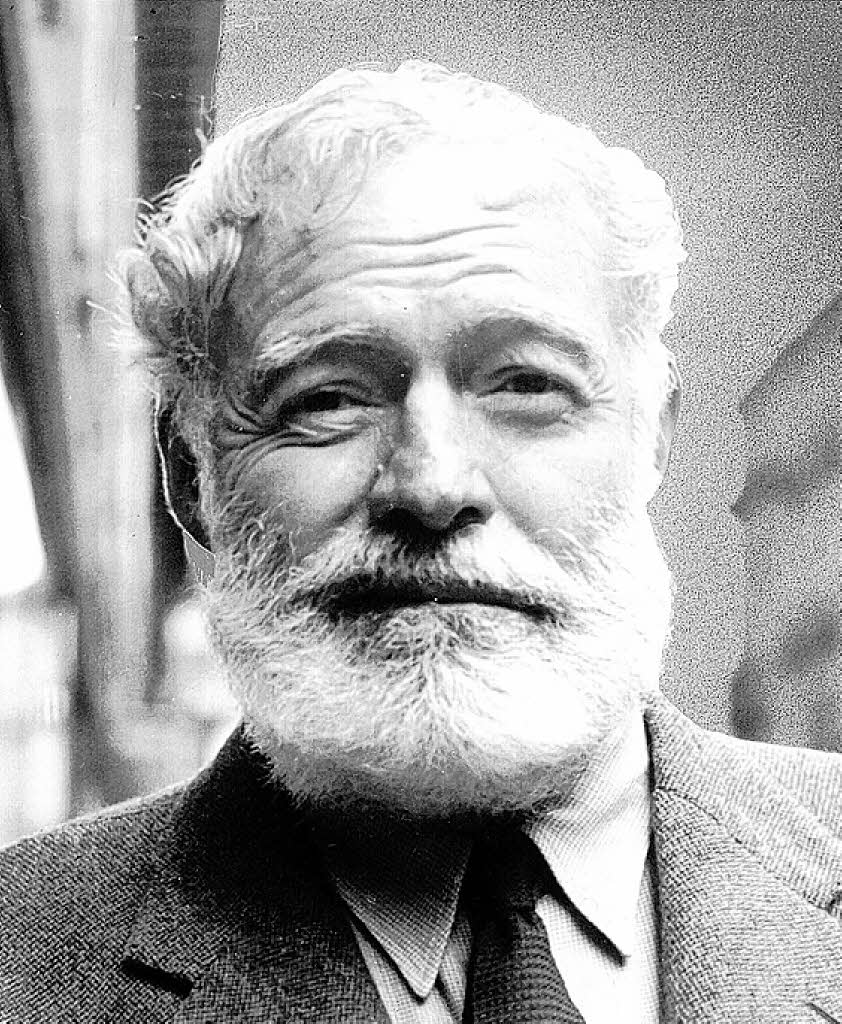Wartime and Wilderness in the West: Ernest Hemingway
Posted on May 16, 2019
As a man disillusioned by the ravages of war and lost love, Ernest Hemingway penned male-centric fictional works that spoke brusquely of the unpredictable American psyche and, as a result, has been considered a notable trailblazer in 20th-century naturalist literature in the United States.

Born on July 21, 1899, in Cicero, Illinois, Hemingway was raised conservatively in the suburbs yet enjoyed frequent vacations with his family at their cabin in Northern Michigan, where he became skilled in such outdoor activities as hunting and fishing. In high school, Hemingway was highly active as a writer in the school newspaper, Trapeze and Tabula, and his early experience as a journalist came in handy in his first job as a Kansas City Star reporter. He was only 18 years old, with an adventurous spirit that refused to be bogged down by college and the quiet academic lifestyle.
In 1918, Hemingway served in World War I as an American Red Cross ambulance driver for the Italian Army. However, he sustained injuries in Fossalta di Piave, Venice, and was hospitalized in Milan, where he met a nurse named Agnes von Kurowsky; the two would shortly be engaged to be married, but Kurowsky later left Hemingway for another man. Hemingway preserved his trauma from these events and translated it into his future written works.
In the mid-1920s, after meeting and receiving encouragement from a few established American writers in Paris-such as F. Scott Fitzgerald, Gertrude Stein, Ezra Pound, and James Joyce, known as the “Lost Generation”-Hemingway shifted from journalistic to fictional writing. His first published novel, The Sun Also Rises (1926), was widely successful and based on his travels and experiences in Europe. The postwar modernist novel centers on a group of American and British expatriates who travel from Paris to Spain, where their friendships and relationships are radically tested and transformed.
After settling down in Key West, Florida, with his second wife and son, Hemingway published A Farewell to Arms (1929), the novel that would quickly cement his place in American literary history. Set during World War I, A Farewell to Arms tells the tragic love story of American lieutenant Frederic Henry and English nurse Catherine Barkley, who struggle to keep their love and hopes-and themselves-alive in a time of violence, death, and disease.
Hemingway spent much of the 1930s traveling and indulging in various outdoor activities-including hunting in Africa, bullfighting in Spain, and deep-sea fishing (even buying his own fishing boat) in Florida-so much so that his public image as an outdoorsman would become as highly recognized as his written works. His travels spawned such works as the following: Death in the Afternoon (1932), a nonfictional study into the sport of bullfighting in Spain; Green Hills of Africa (1935), another nonfiction piece on big-game hunting in Africa; and To Have and Have Not (1937), a novella about a Floridian fishing boat captain in dire straits during the Great Depression.
Serving as a war correspondent during the Spanish Civil War of 1936-1939, Hemingway based his novel For Whom the Bell Tolls (1940) on his experiences in Spain; it would become his most commercially successful work among his other novels. Titled after a meditation quote from metaphysical poet John Donne, For Whom the Bell Tolls tells the story of a young American caught in the midst of the Spanish Civil War and whose role in the war’s guerrilla movement could change Spanish history in a single blow.
After World War II, Hemingway moved to Cuba and continued traveling and writing. In 1951, he wrote The Old Man and the Sea, a novella about the maritime misadventures of a Cuban fisherman in hot pursuit of a long-sought-after giant marlin. The Old Man and the Sea was incredibly well received, winning the 1953 Pulitzer Prize and earning Hemingway the 1954 Nobel Prize in Literature.
Hemingway moved from Cuba to Ketchum, Idaho, in 1960. Suffering from anxiety and depression as well as the ghosts of long-ago war and traveling injuries, the writer was hospitalized twice at the Mayo Clinic before shortly thereafter taking his own life with a shotgun at his Idaho home.
Follow our Author Highlights entries on the 1-Hour Proofreading blog for more!
Sources:
Disclaimer: Image is not ours. Credit to the owner.
About 1-Hour Proofreading
1-Hour Proofreading is a growing start-up offering fast and efficient editing services at a reasonable price with the assurance that the document is publication-ready the soonest you need it. Its team of highly competent professional editors is committed to helping those in need of quality editing services while facing tough deadlines.
Visit 1hourproofreading.com for more details.
Follow us:
Back to Grammary



